What is product positioning?
We’ve been bringing you some shorter blog posts that are designed to give you some insight and understanding of some of the more complex terms and ideas in the world of eCommerce and marketing. We’re keeping these posts shorter and more to the point, so that you’re able to get to grips with everything nice and quick, so you can get on with growing your business. Today we’re taking a look at product positioning, why you would carry out a product positioning exercise and what you’ll get out of it.
What is product positioning?
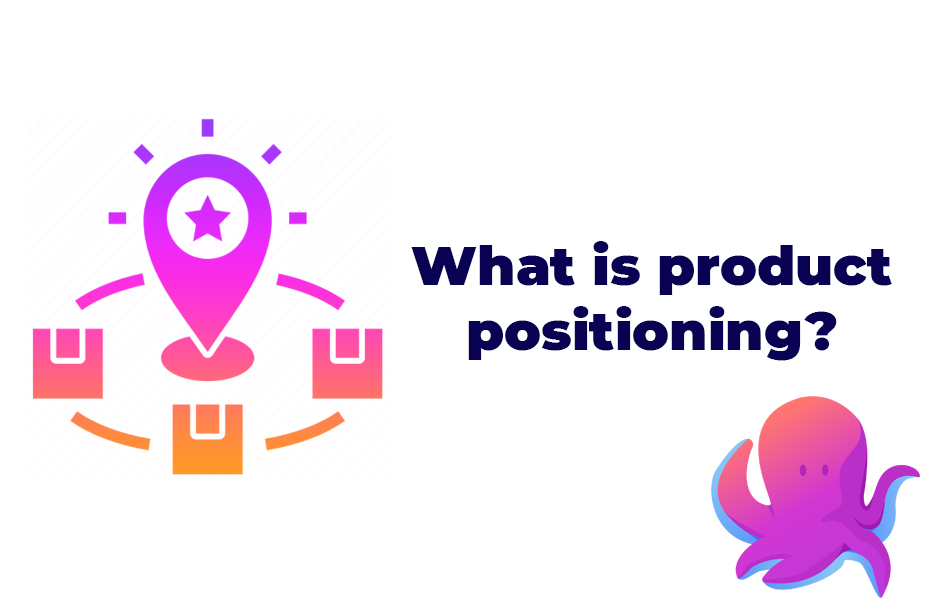
Product positioning is about determining whereabouts your product or service sits in your industry. It is a type of theoretical exercise to establish what makes your product (or service) unique, and what makes it better than the alternatives, or your competitors.
Why conduct a product positioning exercise?
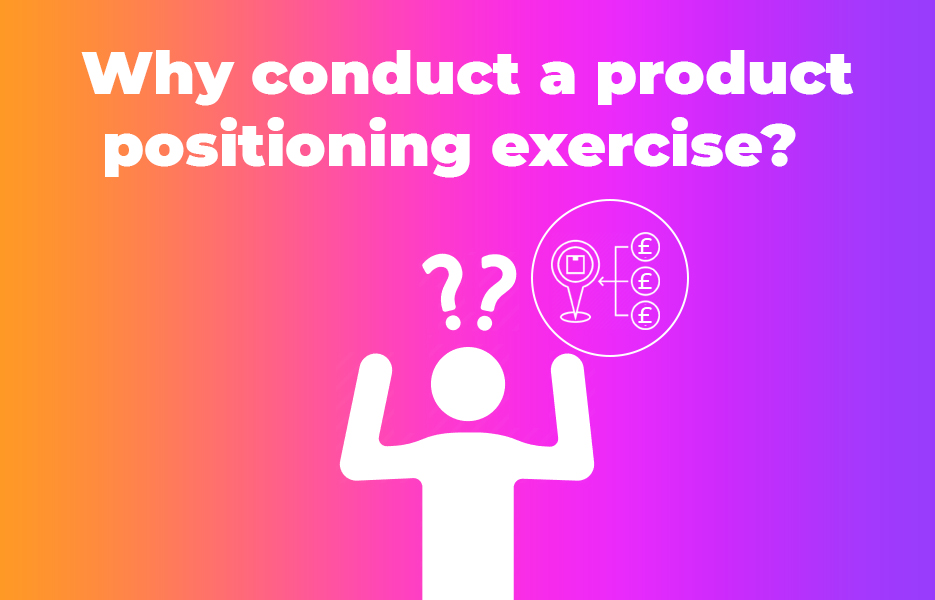
You might think that this sort of theoretical exercise is something you can afford to skip out on, especially if you have already conducted target customer research and you’ve done a thorough analysis of your niche and the wider market. But by narrowing down what makes your product or service so special and saleable helps you to understand how you can market your product to your customers – which can help you build your strategy in a much stronger fashion.
What can influence product positioning?
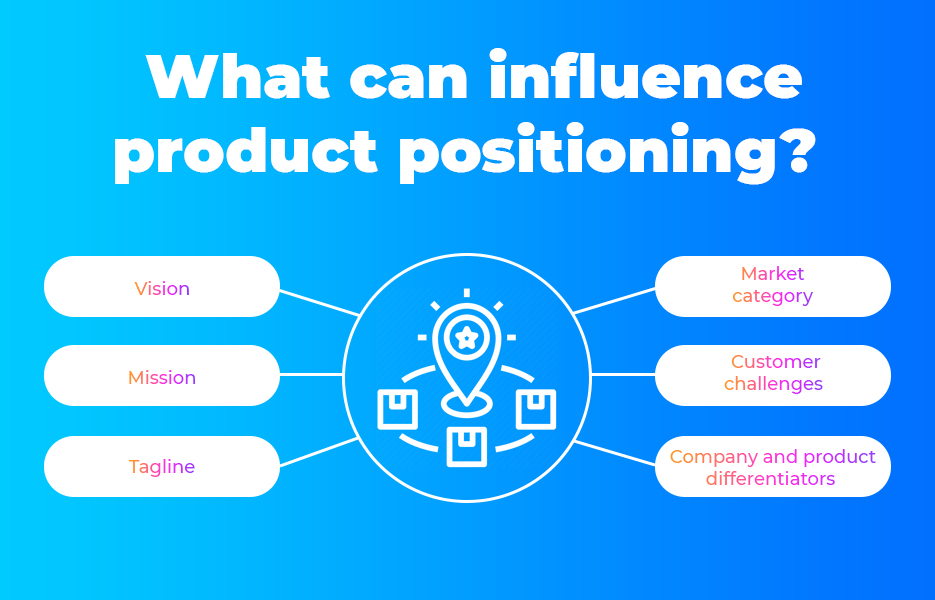
Your product positioning is created from a number of strands that loop together to demonstrate the unique value of your product. As you carry out your product positioning exercise, you’ll be able to gain more clarity as you understand your customer, the market and your product knowledge. This will add up to help you direct your team and help you to optimise the position of your product to create the biggest success.
There are seven main elements that can help influence your product positioning:
Vision – this is where you expect your product to be in a set amount of time.
Mission – this encapsulates the steps that you’re going to take to take your vision from theory to reality.
Market category – this is the sector, or niche that your company is in, and the customers you are targeting.
Tagline – this is your catchphrase or slogan that your team are using to describe both your company and your product.
Customer challenges – these are the reasons that your customers are looking for your products – the pain points that have triggered them to seek a solution.
Company and product differentiators – these are the points that make your company or product valuable – your unique selling points that attract customers to work with your business.
Brand essence – these are the main characteristics that you want associated with your product and overall brand, as well as what you want to be known for.
If there are other elements that make sense to include in your product positioning exercise, then go ahead and include them – like we mentioned when we looked at SWOT analysis and other tools, your business is unique, and the tools you use need to work for you.
How should you develop your product positioning strategy?
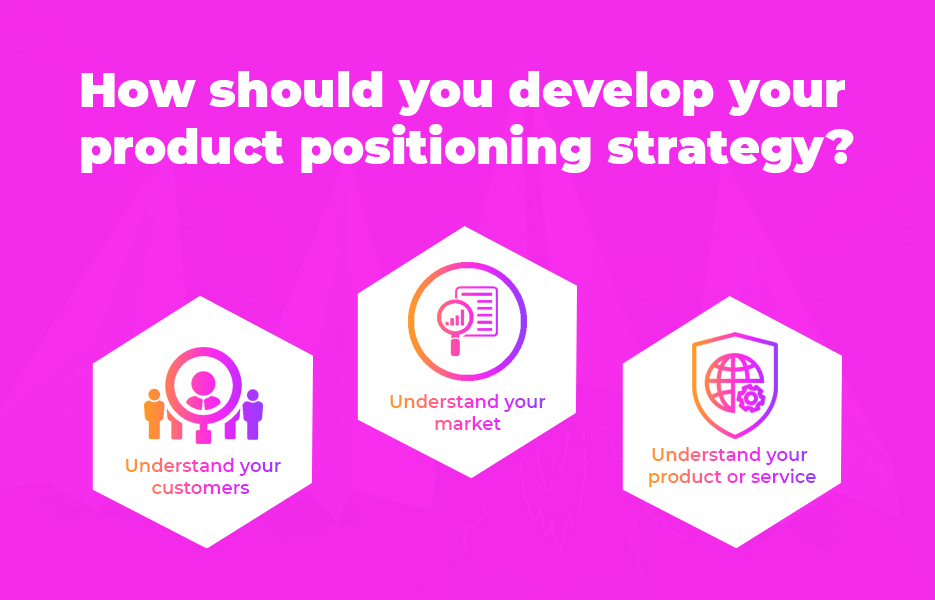
Creating a product positioning strategy is something that is best done with your team – although if you’re still a team of one then you may consider getting friends or family that can advise you involved so that you can look at things a little bit more impartially. You’ll be looking at product management and your product management together to understand and establish what is at the core of your product. To get to that point, you’ll need to get understanding of these three main things:
Understand your customers
This part of your positioning should be relatively straightforward – especially if you have done your target customer research well. In this part of your positioning strategy, you’re going to be describing the attributes of your target customers – from demographic information to behavioural and psychographic data, and geographic details.
You can use target customer persona profiles here to add more information and help your team to gain further understanding, and you’ll also be looking to detail the problems that your customers are trying to solve, which can help you to gain further clarity.
Understand your market
Carrying out a market analysis will help you to identify your competition, and will allow you to identify all the points that make your product or service unique. How does your product or service compare with those of your competitors? What do you do that provides extra support, service or value for your customers?
Understanding why both your direct and indirect competitors are serving customers will help you to identify the customers that you want to reach, and will help you to illustrate in your marketing activity why your product or service is the right option for them.
Understand your product or service
Your positioning should be focused upon the value that both your company and your product or service provide. You can use a tool such as a SWOT analysis or the Five Whys (find out more in this blog post) to look realistically at what your product excels at, and what could be improved to make your product, and your customer service even better.
Once you have this knowledge, you’ll be able to use it to create a much stronger marketing message, and help your customers make their purchasing decisions in a much more informed manner.
What is a product positioning statement & why do you need one?
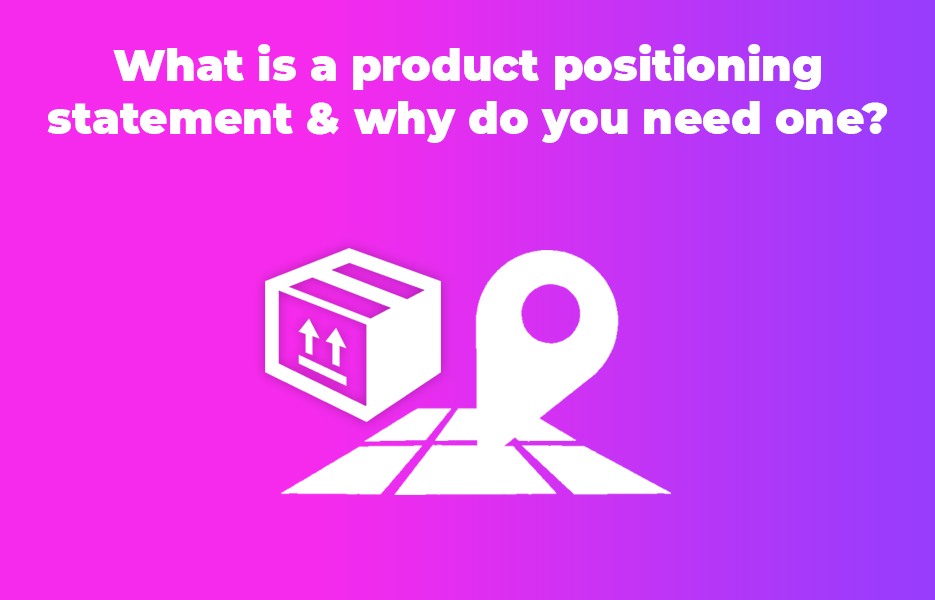
When you have established and understood your target customers, the market and your product or service, you will want to use that information in a useful way going forward. If you’re not going to use the information, you will have just carried out an exercise for the sake of it, and nobody enjoys that kind of exercise!
Creating your product positioning statement will help describe your target audience, why your product or service is unique, and why your customers should want it. It doesn’t have to be very long – it just needs to be a single sentence that spells everything out clearly.
While we were putting this post together we stumbled on this suggested positioning statement template – and we couldn’t put it better ourselves, so we’ve borrowed it to share with you:
For [group of users] that [need/want], [company/product] is a [category/solution] that uniquely solves this by [benefit].
So, let’s use the example of Sudocrem – the nappy rash cream that is known and loved by millions (and referred to by many as ‘magic cream’!). Using this template, it would go something like this:
For parents of children with nappy rash that need an effective way to treat it, Sudocrem is the leading antiseptic healing cream that uniquely treats nappy rash, eczema and minor surface wounds.
Your product positioning statement will help you to get your product in front of the right customers – you’ll be able to use this information to help choose your social media channels, and how you’re going to market your product to them.
What can influence how a product is perceived?
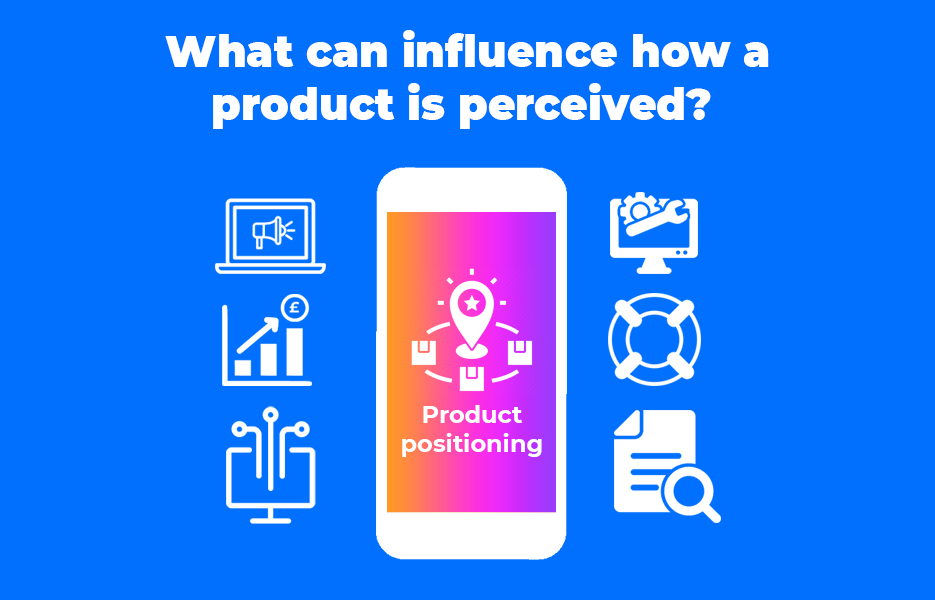
If you’re going to carry out a product positioning exercise, you’ll be looking to establish how you want your product to be seen by customers, and how you want it to be known in the wider market. There are a number of factors that are going to influence how your product is understood and reacted to by customers. It isn’t just what customers see that is important though – it is their whole experience with the product, your company and your after sales service that will have an impact.
Here are some of the things that will feed into the experience of your customers:
Marketing – both existing and potential customers will discover your products and assess whether it is a suitable solution for their needs from your marketing activities.
Sales – the interaction that your customer have with your company, both prior to, and after making a purchase.
Technology – what are your customers paying for, and what your product or service actually does.
Supporting systems – your internal technology and solutions that help you to create or source your product or service. This could include your suppliers or manufacturers.
Third party factors – depending on your industry, this will include other products and services that your customer already has, or works with from other companies.
Support – your pre- and post-sales support is essential here. This includes things like tutorial videos, how easy it is to access your team for questions and so on.
Policies – these are your internal rules and procedures that helps your business do what you do best.
Every single point that your customers can interact with your company is an opportunity to reinforce or undermine your product positioning. While you’re planning where your product should be positioned in the market, and how you want your product to be perceived, you’ll need to think about every touch point your customer can interact with your business, so that you can improve their experience everywhere.
Product positioning might be a theoretical exercise, it can be a really valuable exercise to help you understand your product, where it sits in the market and how you can ensure your marketing strategy is optimised for your customers. It can also be incredibly useful when refining how you interact with your customers – and this is where your product positioning exercise really provides the value. By taking the information you gain from your product positioning, you’ll be able to really lead your customers to the conclusion you want them to think and feel about your product, and ultimately, how to come to the decision that your product or service is the one they want or need.








DropShip products from verified suppliers to diversify your inventory and scale your eCommerce business